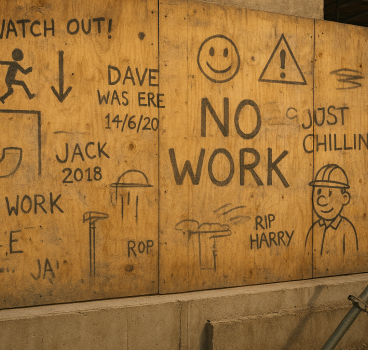The strange world record attempts in construction
Construction is usually about precision, safety, and long-term performance, but sometimes, the industry takes a playful turn. Over the years, builders, engineers and even communities have attempted and sometimes achieved, world records that transform construction into a spectacle. These efforts are rarely about necessity. Instead, they demonstrate ingenuity, teamwork and a willingness to push the limits of what’s possible with bricks, beams and concrete.
While not every record attempt makes it into the official Guinness World Records archive, the strange and surprising feats of construction leave behind stories that are just as memorable as any skyscraper or bridge. From houses made entirely of unusual materials to towers built faster than anyone thought possible, the history of record-breaking construction projects is filled with eccentric ambition.
The tallest structures built in record time
In 2015, Broad Sustainable Building in Changsha, China, stunned the world by assembling the 57-story "Mini Sky City" in just 19 days - averaging an astonishing three floors per day using modular, prefabricated components. The structure featured 800 apartments and office space for 4,000 people. A similarly remarkable precedent occurred in 2011 when the company assembled a 30-story hotel (T30) in just 15 days
Such attempts to beat the clock highlight a shift in construction thinking. What once took years could now be reduced to weeks, all while still meeting structural and safety standards. These feats are records not only of speed but also of precision and planning, proving that modern construction can be as much about choreography as it is about heavy lifting.
Swift Single-Family Homes
The drive to build quickly isn't just in high-rise projects. In Alabama, a 1,200-sq ft home, complete with three bedrooms and two bathrooms, was erected in just 3 hours, 26 minutes, and 34 seconds as part of a Habitat for Humanity initiative. In the Netherlands, the Heijmans ONE House, a fully equipped prefab home, can be assembled in a single day (see images above and below). Meanwhile in India, a 10-storey commercial building known as Instacon Tower went up in just 48 hours using steel modules.
Buildings made from the most unusual materials
If there is a record for weirdness in construction, it often involves materials. Around the world, builders have experimented with creating structures from objects never intended for the job. One record-breaking project in Nigeria produced the world’s largest building made entirely of plastic bottles. With thousands of discarded bottles filled with sand, the walls became surprisingly strong, demonstrating a quirky approach to recycling with a serious environmental message.
In Panama, Robert Bezeau - nicknamed the “Plastic King” - created the largest plastic bottle castle. Standing 14 metres tall, it was built from around 40,000 bottles and even includes a dungeon made of 10,000 bottles. More recently, PepsiCo in Serbia set a record with a structure made from 57,288 used plastic bottles, spanning 250 metres.
Elsewhere, teams have attempted structures built from foodstuffs, ice and even playing cards. These attempts are rarely meant to last, but they capture the public imagination by showing that construction is not limited by conventional materials. They also blur the line between art and engineering, as participants find ways to balance novelty with structural stability, if only for long enough to take a photograph and claim the record.
The longest and largest bricklaying challenges
Masonry has also inspired competitive record-breaking. In various countries, teams of bricklayers have attempted to set records for the fastest walls built, or the tallest freestanding towers constructed from bricks without mortar. These challenges often take place at trade shows or community festivals, blending craftsmanship with showmanship.
The sight of skilled masons racing against the clock, trowels flashing and rows of perfectly aligned bricks rising at speed turns construction into performance. While such records don’t leave behind permanent monuments, they celebrate the skills of tradespeople whose work is normally measured by durability rather than spectacle.
Roads and bridges with record-breaking speed
Beyond buildings, infrastructure projects have also entered the record books. In China, railway construction teams have repeatedly attempted and achieved, records for the fastest bridge launches and track-laying operations. These feats are less about show and more about demonstrating national prowess in engineering. The logistics required to pour concrete, assemble steel and align complex components in such short timescales turn these records into feats of organisation as much as of construction skill.
Such achievements remind us that record attempts are not always eccentric. Sometimes, they are milestones in demonstrating new techniques that will later become standard practice across the industry.
Demolition records or bringing down buildings faster
Record-breaking feats also extend to controlled demolition. In Abu Dhabi, the 165-metre unfinished Mina Plaza towers were brought down with explosives in just 10 seconds - earning the title of the tallest building demolished by controlled explosion. In Seattle, the Kingdome was the largest structure ever brought down by volume - nearly 20 million cubic metres - in 2000. And in Russia, engineers demolished a staggering 461.5-metre antenna mast, the tallest structure ever felled with explosives, back in 2009.
In their own way, demolition records show the other side of construction’s ingenuity: the ability to undo in seconds what once took years to build and to do it safely and predictably.
Why construction keeps chasing records
At first glance, many of these world record attempts seem frivolous. Why build a house from bottles, or a skyscraper in less than three weeks? But beneath the spectacle lies something more profound. Record attempts capture the imagination because they highlight human creativity, determination and the willingness to test limits.
In construction, a field often associated with regulations and caution, records provide a space for experimentation. They allow builders to showcase skills, trial new methods, or make statements about sustainability and technology. Even when the result is temporary, the lessons can be lasting. Prefabricated speed records point the way to more efficient building methods. Bottle houses highlight the potential of waste materials. Bricklaying competitions remind us of the skill and pride of traditional trades.
Construction is serious business, but the strange world of record attempts offers a lighter perspective. From the fastest towers to the quirkiest materials, these feats reveal a side of the industry that is playful, imaginative and sometimes bizarre. They remind us that building has always been about more than function, it is also about expression, creativity and the joy of making something extraordinary.
In the end, whether it’s a record-breaking skyscraper, a plastic bottle house, or a wall built in record time, these achievements show that construction can still surprise us. They are proof that even in an industry defined by rules and regulations, there is room for spectacle and for the sheer thrill of pushing the boundaries of what we can build.

Additional Articles

Is construction site graffiti a form of folk history?
Walk onto almost any construction site and you will find writing, sketches and markings that serve a purpose beyond the practical. On timber hoarding, concrete shuttering, plasterboard and steel,...
Read moreWhat construction can learn from Ant colonies about logistics and site movement
If you want to witness flawless logistics, responsive movement and coordinated planning in action, you do not need to observe a hyper-automated warehouse or a cutting-edge construction site - you...
Read more

Why everyone has a favourite skip and what it says about you
In construction, there are two universal truths – tea, of course, is essential and believe it or not, everyone - whether they are prepared to admit it - has a favourite skip. It may sound strange,...
Read more